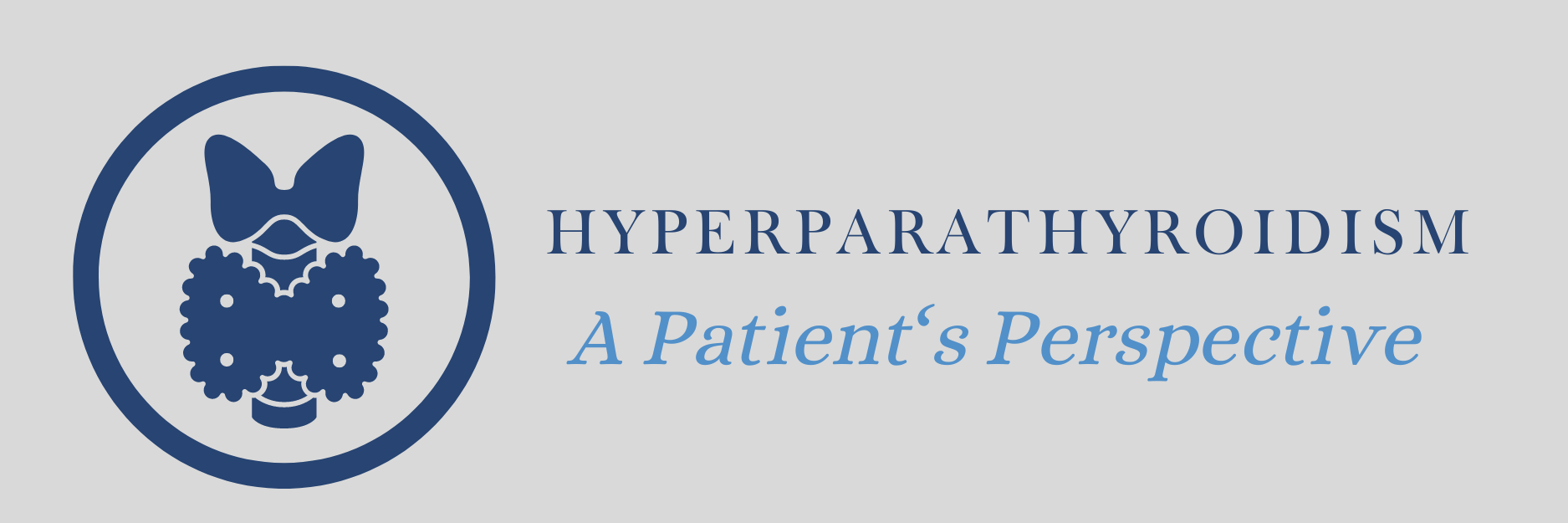Episode 3: Tests & Scans for Hyperparathyroidism
In episode 3 Lisa Marie discusses the very basic must have tests for diagnositic puposes, along with a variety of scans which may be organised by your healthcare professional.
Lisa Marie also mentions a Sestambi scan, which she finds very problematic to pronouce correctly, so she shares her apologies if this is not correct.
ABBREVIATIONS:
- HPT - Hyperparathyroidism.
- nHPT - Normocalcemic Hyperparathyroidism
- PTH - Parathyroid Hormone Level.
CLARIFICATIONS:
Hyperplasia verses single adenoma.
- Hyperplasia affects all four glands and the glands become enlarged.
- A single adenoma usually a benign (non-cancerous) tumour of the gland.
RESOURCES
The information shared in this podcast has been provided by several sources. These include outcomes from personal consultations with medical professionals, my own experiences, published research by expert medical professionals, and the NHS website. Please click on the links below for more information.
Hyperparathyroidism
https://www.nhs.uk/conditions/hyperparathyroidism/
Normocalcemic Hyperparathyroidism
https://www.ncbi.nlm.nih.gov/pmc/articles/PMC7923978/
Hyperparathyroidism Support & Information - Patient to Patient Support Group
https://www.facebook.com/groups/406980976340533
NICE Guidelines
https://www.nice.org.uk/guidance/ng132
DISCLAIMER: Lisa Marie is not in any way medically trained, she is not providing medical advice, and the information that is shared is in no way a substitute for qualified medical advice. If you believe you may have this disease, then you must seek the most appropriate medical advice, this podcast aims to help you navigate your way to the right medical support and diagnosis.
Transcript
order some blood work. He may even request that your urine is tested and various scans to verify a diagnosis of hyperparathyroidism. And to highlight where you might sit, what presentation within hyperparathyroidism you might have, such as normocalcemic hyperparathyroidism, normal hormonal hyperparathyroidism, or classic presentation.
And there are a number of ways that this can be done, and it will depend where in the process you're at as to . Who does what?
[:So, if you're seeing your GP, they may order some blood work and depending on what that blood work shows up, they may, well, then refer you on to an endocrinologist or another consultant.
So, after the blood work, either your GP or your endocrinologist may decide to test your kidney function, your bone density, and even consider a genetic predisposition to parathyroid disease. So it really does depend on that first testing of your bloods as to what the next steps are.
And that will vary from country to country. And, If you're in the UK, that could vary from GP to GP and from hospital trust to hospital trust. So these are just a few things to be aware of along the way. And it's something that you can also ask your GP, consultant, endocrinologist,
[:healthcare provider. if they're going to do any of these tests.
So the first thing to ask your doctor to do is to order a single blood draw to measure your calcium parathyroid hormone level and your vitamin D at base level. Some GPs, doctors, healthcare providers will order cretinine and some will order vitamin D3 and phosphate.
Calcium and PTH are usually high with primary and classic presentation of hyperparathyroidism. And vitamin D can be low. But it's not always. Some people with this disease have normal vitamin D levels and it's often why, particularly in the UK, some endocrinologists will want to see patients with a low vitamin D on a course of vitamin D therapy.
supplementation just to see whether this has any bearing on the parathyroid hormone level and calcium level. So as we mentioned before,
[:parathyroid glands regulate calcium levels by secreting the parathyroid hormone. As we've discussed, some patients have normocalcemic hyperparathyroidism, which is normal calcium level, often normal vitamin D and high parathyroid hormone level. And As we've also mentioned, some patients have normohormonal hyperparathyroidism. So, how do you move forward if you don't have the classic presentation? Well, if the doctor tells you you don't have it, I would highly recommend you asking for a copy of your blood test results. Have a look. at the printed results together with their reference ranges and see where you fall within those ranges. That's the first start. The second is to make sure that your doctor is aware of your symptoms, especially if they continue to worsen. If you're not happy with the response, Get a second opinion because low or
[:normal calcium or PTH levels, parathyroid hormone levels, can occur in the various types of hyperparathyroidism that we've mentioned, such as secondary, normocalcemic and normohormonal. And obviously we've touched on familial disorders as well, and genetic testing.
. So we've talked about blood chemistry, kidney function, bone density, genetic testing briefly, but there are also imaging scans that are often requested and organized once the initial blood workup has been done. Now again, these can vary from trust to trust if you're in the UK. These can also vary depending on the country you're in.
Lisa Marie: And these can also vary depending on whether it is the doctor, or the endocrinologist, or the surgeon requesting them. But they can include the following. Ultrasound. A 4DCT
[:scan with or without contrast. Or PET imaging, such as a PET Choline scan. And in my case, I had an MRI as well, with contrast. So I had an MRI with contrast, I've had, two ultrasounds, and I've also had a PET Choline scan these are the types of imaging that could be requested. And I think it's important to note here at this point with regards to imaging, not everybody who has imaging gets the scan to locate exactly where their parathyroids or their perceived enlarged parathyroid glands or parathyroid glands with adenomas on are.
And it can be quite confronting and disappointing when you're sent for a scan and there is no confirmation of the diseased gland. Many patients experience this. This is not unusual. And the purpose of these scans is not so much in my own personal experience for
[:diagnostic purposes, but for the purposes of location in my own experience and from the medical professionals that I've been involved with, the blood chemistry will be the diagnostic tool. The imaging is secondary and really only to help the surgeon as a guide to know where those glands are. So I hope that you found that helpful. Thank you for listening to episode three. Please join me in episode four, where I share my own parathyroid journey and some of the things that I've experienced along the way.


